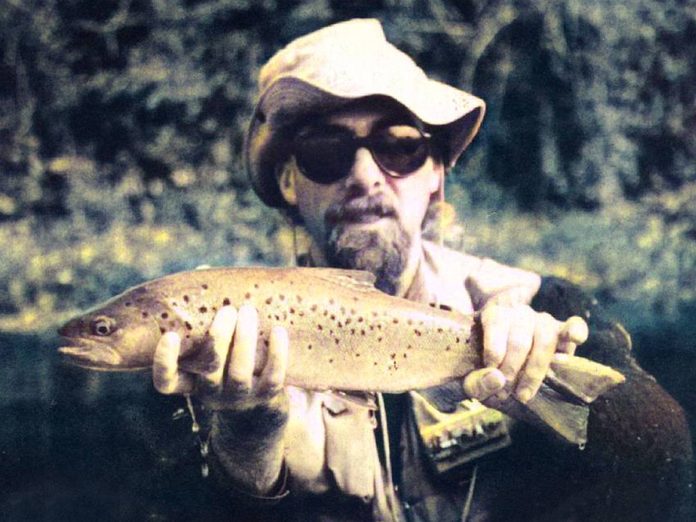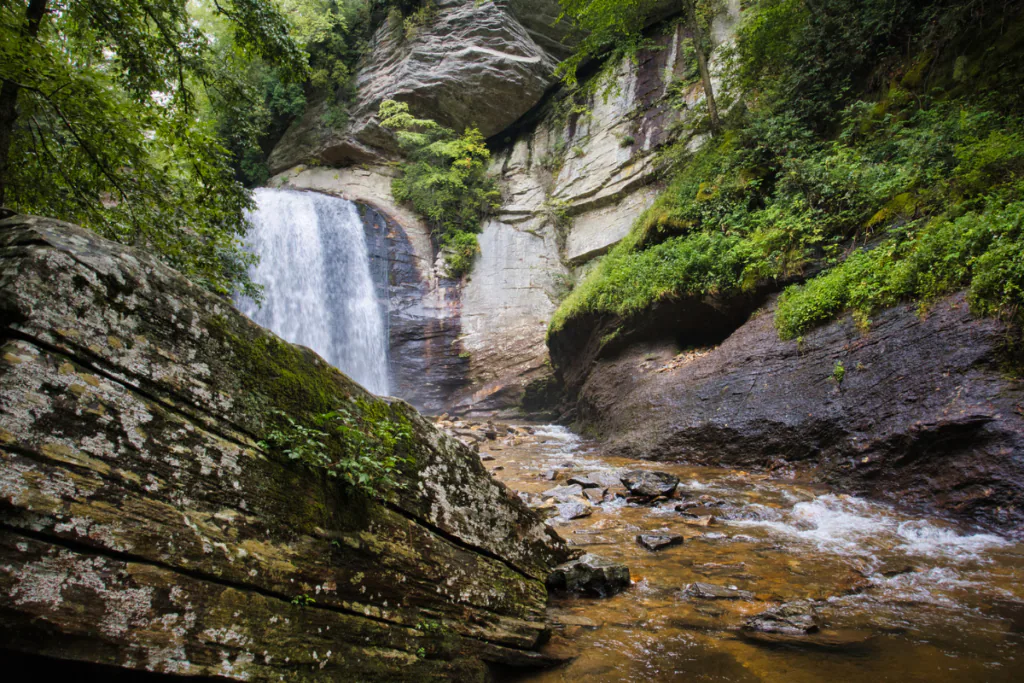The author with a brown trout taken on a dragonfly nymph.
Dragonfly By Martin Langlands
The adult dragonfly is a reminder of summer days in the high country. The sheer size and agility of the adult dragonfly never fail to fascinate all who see it. The sight of dragonflies is short-lived over several months during the height of summer. However, little thought is given to the secretive, almost creepy dragonfly nymph that lives for 2-3 years underwater before transforming, changing into the familiar dragonfly.
The dragonfly nymphs, as they are commonly referred to, live in most stillwater and slow flowing freshwater throughout the South Island. They inhabit weed beds and stony caverns, which provide protection from predators. They are carnivorous, feeding, and preying on small insect nymphs and small fish. The dragonfly nymph is one of the largest aquatic insects in New Zealand and is a giant predator in the insect world.

As in all nature, they too are preyed upon, mainly by hungry trout, eels and other freshwater fish. Trout feed on dragonfly nymphs all year round.
From October to January the nymphs start migrating toward the shore. During a warm, sunny day the nymphs walk onto dry land, and then magically transform into creatures of the air. The husks left after the nymphs have hatched into winged dragonflies are seen scattered around the lal<e’s shoreline during summer.
During late spring and summer, both rainbow and brown trout often selectively feed on dragonfly nymphs. As dragonfly nymphs move into shallower water, they are very vulnerable to foraging trout. Whilst they are well camouflaged, their size (1.5 – 3.5 cm long) enables trout to see them. The size of the nymph also means that they are a food bonanza for trout.
Sometimes during strong winds, wave action dislodges dragonfly nymphs and they swim in mid-water, using special jet propulsion. In this situation, they are easy prey for trout cruising in the waves.
Over many years, I have with my family enjoyed the South Island’s high country stillwaters. During these years I have experimented with many dragonfly nymph imitations. Below I have listed my favourite patterns:

1. Creedon’s Creeper
Designed by well-known and fondly remembered Christchurch angler, writer and fly tier, Al Creedon. This pattern can be tied with many colours such as olive-brown and grey. It has a really buggy look about it. As with other dragonfly patterns, it is best tied with lead wire. The extra weight allows the nymph to sink into the strike Zone, just above the weed bed. Creedon’s Creeper with John Hey.

2. Mud-eye
Dragonfly nymphs feature big in Australian waters. Australians often refer to dragonfly nymphs as ”mud-eyes”. The mud-eye pattern incorporates large eyes (as the natural has) and is tied with a speckled colouration, once again often seen in the natural. McDonald Mudeye with Dick Marquand.

3. Bragg’s Dragonfly Nymph
This pattern doesn’t look like a dragonfly nymph at all, yet works very well as many impressionistic flies do. The colours l feel are the special feature of this fly, combining a mustard-coloured hackle with black bars. This pattern is very popular in Lake Alexandrina and the Ashburton lakes. Bragg’s Dragonfly.
Angling Techniques
The most favoured time for dragonfly nymph angling is October to January.
The dragonfly nymph patterns described above are best fished with a very slow retrieve, similar to lure fishing. The most important aspect is getting the nymph to the appropriate depth. You should occasionally scrape up weed on the fly to indicate that you are in the strike zone. If the water is shallow, use a floating line and leader about 12 feet long. If fishing deeper water, try a sink—tip or fast sinking line with a 6 – 9 ft leader.
Blind fishing works well and is most suited to windy conditions. When blind fishing, the angler should cover as much water as possible to get results. Remember to cast near to the shore, as trout often cruise the shallows.
Sight fishing to cruising trout is most exciting, ideally suited to shallow margins and sand flats. The aim is to spot a trout, then cast well ahead of the anticipated path in which the trout is swimming, then when the trout is near to the nymph, give the fly a twitch. With luck, the trout will take the fly. If not, try a smaller size nymph, a different dragonfly nymph pattern, or a lighter tippet.
Surprisingly, another interesting time to fish dragonfly nymphs is when trout are jumping for adult dragonflies. The trout are often frenzied with rising, almost playfully to adult dragonflies. Because the trout are frenzied, they will take dragonfly nymph flies which are rapidly retrieved just below the surface, using a floating line. Although a subsurface presentation is not natural, the trout will still respond. This method of presentation is most effective during the warmest of summer days.
Guided NZ fly fishing and fly fishing lessons in the South Island of New Zealand with professional fly fishing guide, Martin Langlands – Troutlands
Facebook Notice for EU! You need to login to view and post FB Comments!
Credit: Source link































